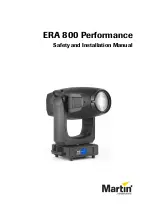
NEAX2400 IPX Feature Programming Manual
Page 206
NDA-24297, Issue 1
C-28
Call Forwarding - All Calls - Outside
Programming (cont’d)
System Data 2, Index 6, bit 4. Call-forwarded station restricted from making calls? 0/1: Yes/No.
STEP 2:
ANPD
- Reserve a number level for feature access and cancel. Assign for Normal (N), Hooking (H),
and Busy (B). Assign NND in accordance with a predetermined numbering plan.
STEP 3:
ASPA
- Assign an access code to CALL FORWARDING - ALL CALLS [C-5] set SID = 8, and to
CALL FORWARDING - ALL CALLS [C-5] cancel SID = 9. Assign Connection Status Index (CI) for
Normal (N) service.
STEP 4:
ASFC
- Assign the station a Service Feature Class that allows SFI = 7 CALL FORWARDING - ALL
CALLS [C-5]. And also assign either SFI 25 CALL FORWARD outside-Local or SFI 26 CALL
FORWARD outside-Long Distance. Assign SFI = 151 when CALL FORWARDING - OUTSIDE is
performed, RSC of the forwarding station is used.
STEP 5:
ARRC
- Allow a trunk-to-trunk connection between the incoming trunks and the outgoing trunks that
will be involved with this application. The incoming trunks include calls extended by the Attendant
Console and DID calls. The outgoing trunks would be DDD or trunks seized when using SPEED
CALLING - GROUP [S-23] or SPEED CALLING - SYSTEM [S-3]. If LCR is used, allow trunk-to-
trunk connection to the outgoing LCR flag route, usually Route 31.
STEP 6:
AKYD
- For D
term
sets, CALL FORWARDING - OUTSIDE may be assigned to a programmable line/
feature key. Assign Type:Function:CALL FORWARDING-ALL CALLS [2].
STEP 7:
ADSL
- Assign SN=1 (Originating; DT Connection) and FKY=2 (Call Forwarding - All Calls; FDA).
STEP 8:
ATNR
- Allow tenant-to-tenant connection for inter- and intra-tenant connections. TRI = 1. For this
feature to be set by the Attendant Console, assign inter- and intra-tenant connection via the Attendant
Console, TRI = 3.
STEP 9:
AMND
- Local outgoing Destination Codes (DC) must be programmed to allow local outgoing calls
such as 92, 93, 94, etc.
STEP 10: ACFS
- Call Forwarding can also be assigned, displayed, or deleted by this command.
FCCS Programming
This data setting describes only the additional or replacement commands used to activate FCCS
services. When used as an FCCS feature, these commands replace the non-network commands (for
example, AAED is replaced by AAEDN). Note that the data setting for FCCS service varies depending
on the node.
Note 1
STEP 1:
ANPDL
- Reserve a number level for feature access and cancel. Assign for Normal (N), Hooking (H),
and Busy (B). Assign NND in accordance with a predetermined numbering plan.
STEP 2:
ASPAL
- Assign an access code to CALL FORWARDING - ALL CALLS [C-5] set SID = 8, and to
CALL FORWARDING - ALL CALLS [C-5] cancel SID = 9. Assign Connection Status Index (CI) for
Normal (N) service.
STEP 3:
ARRCN
- Allow a trunk-to-trunk connection between the incoming trunks and the outgoing trunks
that will be involved with this application. The incoming trunks include calls extended by the
Attendant Console and DID calls. The outgoing trunks would be DDD or trunks seized when using
SPEED CALLING - GROUP [S-23] or SPEED CALLING - SYSTEM [S-3]. If LCR is used, allow
trunk-to-trunk connection to the outgoing LCR flag route, usually Route 31.
Note 1:
When using ASYDL or ASYDN to program an FCCS feature, the basic programming of ASYD is required
in addition to ASYDL or ASYDN.
Note 2:
System timers may be set on a network basis in ASYDN.
Содержание NEAX2400 ICS
Страница 1: ...OCTOBER 2000 NEC America Inc NDA 24297 ISSUE 1 STOCK 200775 Feature Programming Manual ...
Страница 43: ...NEAX2400 IPX Feature Programming Manual Page xxvi NDA 24297 Issue 1 This page is for your notes ...
Страница 690: ...NEAX2400 IPX Feature Programming Manual NDA 24297 Issue 1 Page 647 Splitting S 4 Programming No programming is required ...
Страница 1089: ...NEAX2400 IPX Feature Programming Manual Page 1046 NDA 24297 Issue 1 This page is for your notes ...
















































